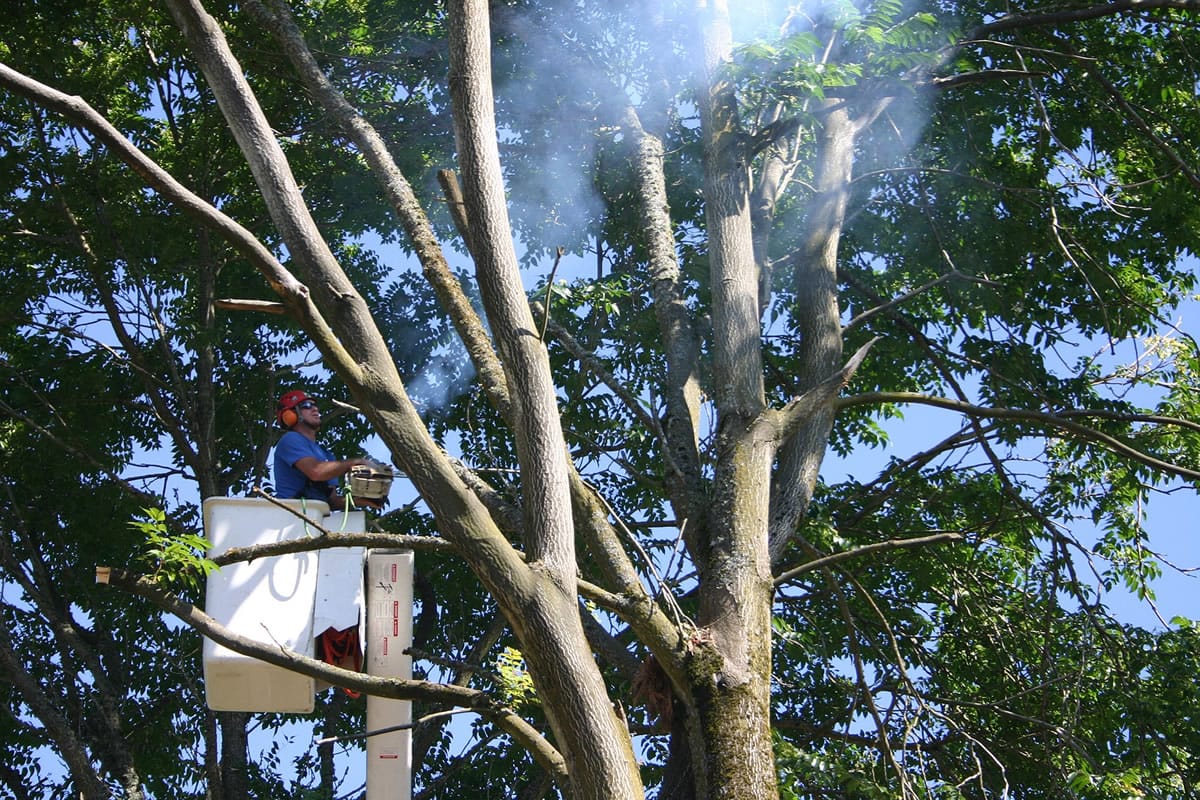With its shady green canopy and centuries-old medicinal lore, the Chinese long ago bestowed the name “tree of heaven” on a plant you’ve probably seen countless times around Vancouver.
But here in the states, many tend to think of the tree along the lines of its more sinister nickname: the tree of hell. And for Vancouver’s Urban Forestry Commission, it’s at the top of the most wanted list for removal.
That’s because the deciduous tree (ailanthus altissima) has become a real troublemaker, said Tim Carper, an instructional staff member at Clark College who sits on the Urban Forestry Commission. This summer, the commission is at the start of a citywide war on the tree of heaven.
It began last week with the removal of four towering giants in yards throughout the Carter Park neighborhood. Susan Sanders, who lives in the neighborhood, spearheaded the effort to cut down the trees with a $1,500 grant from the Vancouver Watershed Alliance.
The tree of heaven can grow pretty much anywhere and it produces a chemical that tends to choke out other plants. It can also tear up concrete and threaten the foundation of a home, said Charles Ray, the city’s urban forester.
“Most of the time, the tree of heaven isn’t in the right place,” Ray said. “You’ll find it growing in cracks and alleyways, up against foundations — pretty much in those areas that aren’t well-maintained.”
It’s a fast grower, and mature trees can reach heights of more than 80 feet. Carper has seen the trees grow as much as six to eight feet in a season, which keeps him busy trimming them down each year.
One day last spring, he actually had to cancel class due to a power outage. The culprit was the rapidly growing root system of a previously removed tree of heaven on campus, he said.
“The tree wasn’t even there anymore, but the roots were still growing,” Carper said. “That’s how aggressive it is.”
The tree originated in China and European settlers brought it to the U.S. in the late 1700s, thinking of it as the perfect species for an urban environment, Carper said. Today, urban foresters throughout the nation consider it a harmful invasive species.
“They thought it would be a great street tree, but as it turns out, it’s really a huge nuisance,” Carper said. “A whole area can actually become a colony of one tree and just kind of take over.”
That’s what Sanders began to see just about everywhere she looked near her home after identifying tree of heaven saplings in her yard. Now, Sanders finds herself pulling new sprouts out from all around her house just about every two weeks.
“The root structure is extremely robust,” she said. “They’ll take out natives. They’ll take out anything they can.”
Sanders began working on raising money to take down the trees about two years ago. She recently consulted with the city to create pamphlets about the effects of the tree and how to treat and control it.
Over the past few months, Sanders has canvassed the neighborhood, passing out pamphlets and looking for neighbors who wanted their trees removed. She found three takers on 29th, 30th and 31st streets.
“Most people are pretty receptive,” she said, “because all they know is, ‘It’s that darn tree that I have to cut down all the time.'”
Cutting down the trees is just the start of the removal process, Sanders said. If you stop there, the tree tends to sprout right back up in numerous other spots nearby.
In Carter Park, the plan is to grind the stumps down after removing the large trunks. But there’s no guarantee that will work, as Ray suggests.
“The problem is when you control them, well, typically they bounce back,” he said. “They grow pretty much where you don’t want them to grow.”
The homeowners may have to continue diligently removing saplings and treating the stumps with herbicide for the next three years to finally kill the widespread root system beneath the surface.
Carper says the key is to get the trees out of the ground while they’re still young.
“If they get to be an old tree, you just about can’t get the roots out,” he said. “You have to have a huge open area and pretty much excavate the whole thing to get the roots.”
Not everyone thinks of the tree as a problem. Some homeowners have told Sanders they want to keep their mature tree of heaven next to their house alive.
That’s not necessarily a bad thing as long as the trees are well-maintained and their saplings are kept under control, Ray said. But most often, the trees just spread out of control and take over yards, sidewalks and alleys.
The tree seems to be most common in older parts of the city, especially the Carter Park and Central Park neighborhoods, Ray said. In the coming years, the city hopes to spread the removal efforts to other areas.




